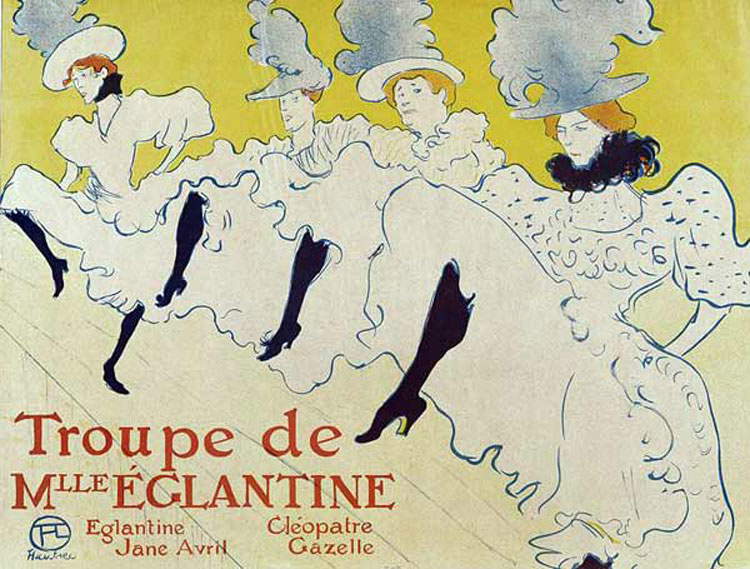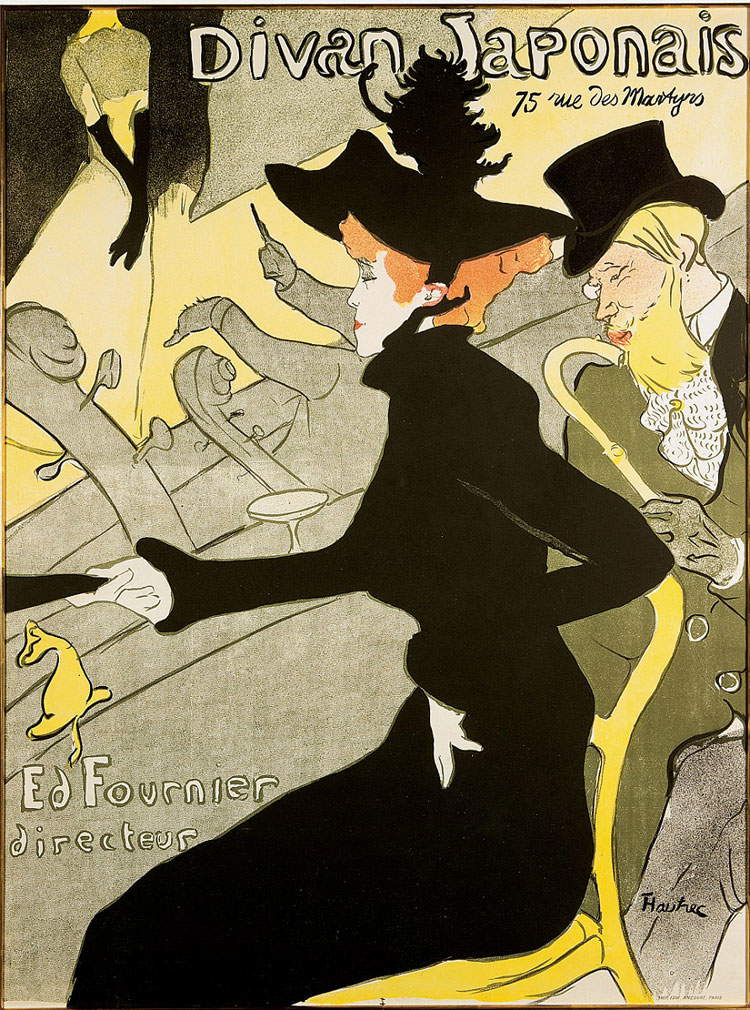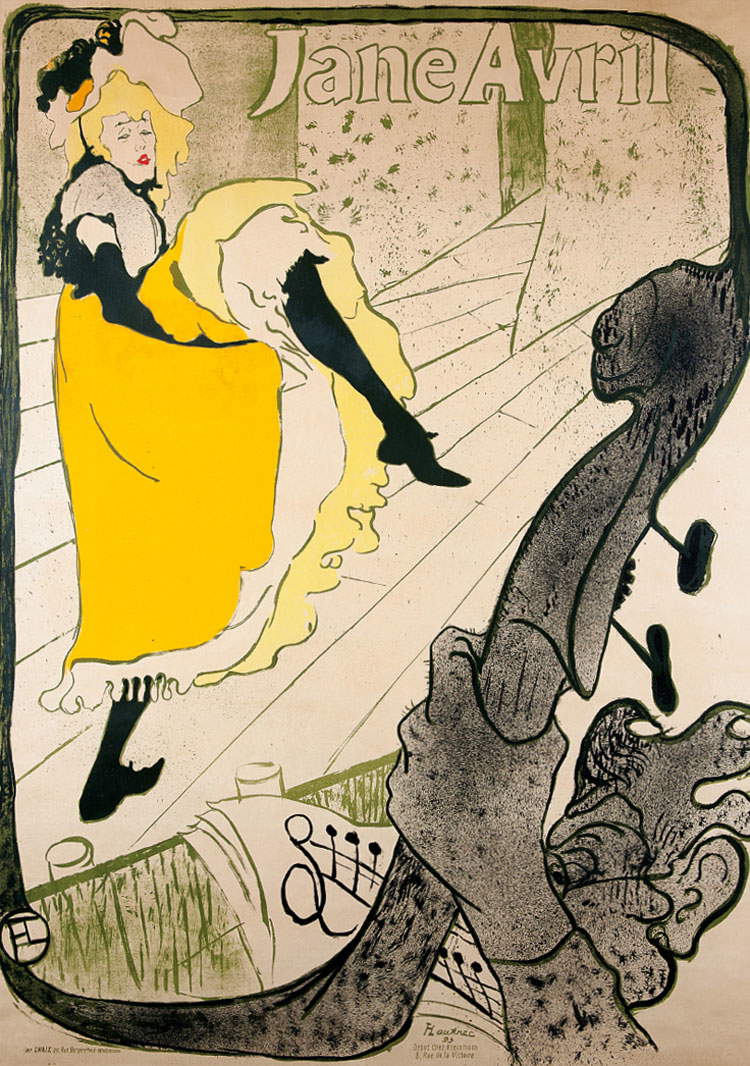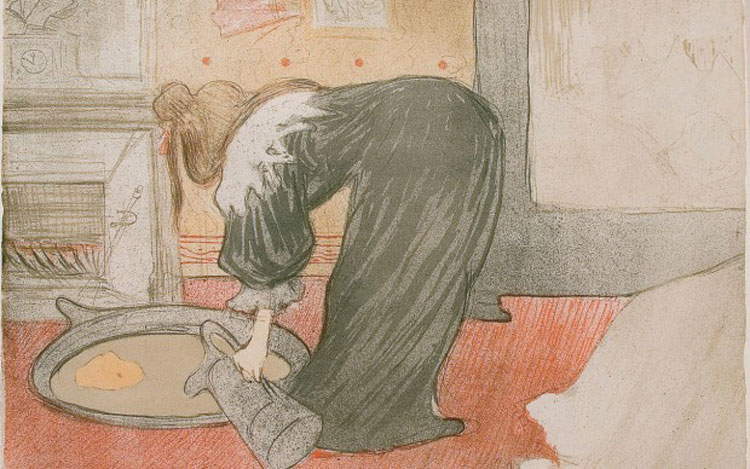La vie parisienne by Toulouse-Lautrec
Who is not familiar with the posters of Henri de Toulouse-Lautrec? Who, thanks precisely to his posters and prints, has not at least once immersed himself in the Parisian climate of the late 19th century, imagining cafes, bistros and the wealthy bourgeoisie of the time? In Verona, at Palazzo Forti, the exhibition Toulouse-Lautrec. La belle époque precisely to recall Parisian life, the climate this city experienced during the Belle Époque. This exhibition, curated by Stefano Zuffi, includes about 170 works by Henri de Toulouse-Lautrec including color lithographs, pencil and pen drawings, promotional graphics and illustrations, all from the Herakleidon Museum in Athens and on display in Verona until September 3, 2017.
 |
| Henri de Toulouse-Lautrec, La Troupe de Mademoiselle Églantine (1896; color lithograph, 61.7 x 80.4 cm; Athens, Herakleidon Museum) |
An eclectic and innovative artist, Henri de Toulouse-Lautrec grew up in the south of France in an aristocratic family of landowners. Moving to Paris in 1872, he began to frequent the studio of painter René Princeteau where he became increasingly passionate about painting and showed his natural inclination. Toulouse-Lautrec proved gifted for painting in the strict sense and equally so for drawing; to studies from life, copies from antiquity and paintings of historical subjects he also added a few caricatures, immediately showing his nonconformist spirit. The artist fit in perfectly with the ferment that the French capital was going through at this time; he had contact with a group of painters attentive to Impressionist and Post-Impressionist research-among them Emile Bernard and Vincent Van Gogh-and frequented the bohemian Montmartre district, developing a certain interest in the working classes.
These years saw the birth of color lithography, experimented with in the field of book illustration, magazines and early examples of advertising. Toulouse-Lautrec proceeds in his work at a rapid pace, giving birth on the one hand to prints intended for albums, newspapers and theatrical programs, and on the other to advertising affiches. Printmaking experiences a real boom and Toulouse-Lautrec’s collaboration with newspapers and magazines is increasingly intense; among the newspapers Lautrec works for is the “Revue Blanche,” a prestigious magazine of literary and artistic criticism whose poster is featured in this exhibition. It is precisely Toulouse-Lautrec’s posters that decree his fame and topicality, precisely because of their new and innovative language capable of intriguing the viewer. Toulouse-Lautrec uses a simple style based on stylized figures, large “flat” backgrounds filled with intense and contrasting colors (his deep blacks are famous), unusual framing, and incisive strokes; all of which attracts the viewer and brings him into the scene. In the posters on display in this exhibition-“Divan Japonais” and “Jane Avril,” both from 1893, are just a few examples-you can see something utterly original and striking at first glance; looking at these works you are not only a spectator but also a participant, almost an interlocutor.
 |
| Henri de Toulouse-Lautrec, Divan Japonais (1893; color lithograph, 80.8 x 60.8 cm; Athens, Herakleidon Museum) |
 |
| Henri de Toulouse-Lautrec, Jane Avril (1893; color lithograph, 124 x 91.5 cm; Athens, Herakleidon Museum) |
One can sense from this exhibition how Toulouse-Lautrec was interested in the society and pastimes of the time. This attention to people and their relationships can be seen in works such as “Au concert” (1896), a lithograph that despite its essentiality is significant and presents well what at the time was a pastime for the bourgeoisie and the nobility, and “Le Jockey” (1899) depicting two jockeys from behind in the midst of competition. Alongside these themes concerning cafes, concerts, horse races, singers and can-can dancers, Toulouse-Lautrec began to take an interest in the humble, the underdog, the stragglers; these are particularly portraits of women with vacant stares and destroyed by alcohol, works not denouncing but simply showing a way of life. Particular is this artist’s interest in the so-called maisons closes, the Parisian brothels. In the 1990s he executed about forty paintings and an album entitled Elles, scandalous works that shocked contemporaries not so much because of the subject matter but because of the crudeness with which it was presented, as it actually is and without embellishments; there was a repetition, therefore, of what had happened in the 1960s when Manet had presented “Breakfast on the Grass” and “Olympia,” paintings in which he showed nudes in a crude way, arousing disquiet and disturbance. Toulouse-Lautrec was a frequent visitor to “brothels” and argued that these women, the prostitutes, were more authentic and spontaneous than the bourgeoisie. In the works on display, one can see women who are not provocative and sensual but tired and blank-eyed, and it is not surprising, then, that the prevailing reaction was one of rejection and that in 1896 Elles, the album from which many of the lithographs on display in this exhibition are taken, proved to be an absolute publishing flop.
 |
| Henri de Toulouse-Lautrec, Femme au tub (1896; color lithograph, 40 x 52.5 cm; Athens, Herakleidon Museum) |
Henri de Toulouse-Lautrec was an artist who, despite difficulties related to his appearance (a genetic malformation, in fact, had caused him to halt in stature at 5 feet 5 inches, deformities in his legs, and a consequent caracolling gait) managed to emerge in the competition-rich Parisian climate, establish himself and become one of the most important and famous artists in the world. What is certainly striking about him is the confidence and elegance of his stroke and his ability to exploit every potential of line and color, while not using embellishments and shading. The works are vivid and immediate, immediately capturing our attention, providing us with a glimpse of a period rich in cultural and artistic ferment and having the ability to make us feel an integral part of an era. Hofmannsthal called Paris “a landscape made only of life,” and by visiting this exhibition and viewing the works of Henri de Toulouse-Lautrec, the feeling is precisely that of living the life of Belle Epoque Paris.
Warning: the translation into English of the original Italian article was created using automatic tools. We undertake to review all articles, but we do not guarantee the total absence of inaccuracies in the translation due to the program. You can find the original by clicking on the ITA button. If you find any mistake,please contact us.




























